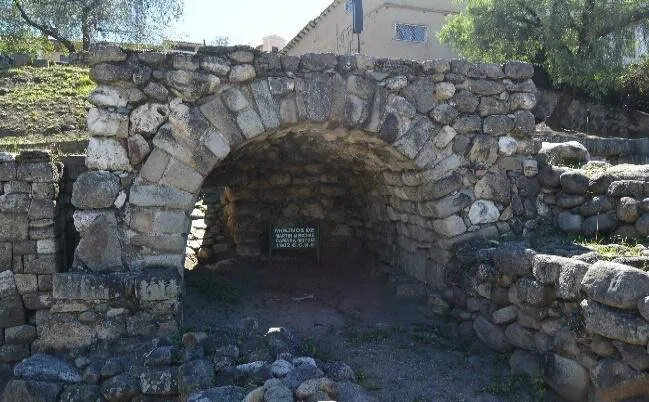The Complejo Arqueológico de Todos Santos is a captivating historical site nestled in the highlands of Ecuador. This archaeological complex offers a window into the past, showcasing the ingenuity and culture of the indigenous people who once thrived in the region. The site includes a variety of structures, such as ancient temples, plazas, and burial sites, which provide invaluable insights into the social and ceremonial practices of its former inhabitants.
Get your dose of History via Email
Historical Background of Complejo Arqueológico de Todos Santos
Discovered in the 20th century, the Complejo Arqueológico de Todos Santos is a testament to the Cañari people’s architectural prowess. The Cañari, known for their resistance against the Inca Empire, built this complex. It later became an important Inca site after their conquest of the region. The site has witnessed numerous historical events, including battles and cultural exchanges between the Cañari and the Incas. The complex’s discovery has allowed historians to piece together significant aspects of pre-Columbian history in Ecuador.
Archaeologists attribute the construction of the Complejo Arqueológico de Todos Santos to the Cañari civilization. This indigenous group was prominent in the area before the Inca conquest in the 15th century. The Incas, led by Tupac Yupanqui, eventually overtook the Cañari and expanded the complex. The site thus reflects a blend of Cañari and Inca architectural styles and cultural influences.
After the Spanish conquest, the site fell into disuse and was largely forgotten until its rediscovery. The complex has not been the scene of any recent historically significant events. However, its excavation and study have provided a deeper understanding of the region’s pre-Columbian history. The site’s preservation allows for ongoing research and education on the ancient cultures of Ecuador.
The Complejo Arqueológico de Todos Santos has not been continuously inhabited since its initial use. The site was abandoned following the Spanish conquest, as colonial powers established new settlements and the indigenous population was displaced. The complex remained untouched for centuries, which has helped preserve its original structures and artifacts for modern-day exploration and study.
The site’s historical importance lies in its role as a ceremonial and administrative center. It served as a hub for the Cañari and later the Incas, facilitating the governance of the surrounding territories. The complex’s strategic location and design reflect its significance in the political and spiritual life of its builders and their descendants.
About Complejo Arqueológico de Todos Santos
The Complejo Arqueológico de Todos Santos is a sprawling complex that includes various structures such as temples, plazas, and tombs. The site’s architecture is a blend of the original Cañari design and later Inca additions, showcasing the evolution of construction techniques and cultural influences over time. The complex is situated in a strategic location that offers both defensive advantages and a panoramic view of the surrounding landscape.
One of the most notable features of the site is the use of cut stone in construction, a hallmark of Inca architecture. The stones are precisely cut and fit together without the use of mortar, demonstrating advanced engineering skills. The complex also includes terraces for agriculture, which are indicative of the sophisticated farming practices of the inhabitants.
The architectural highlights of the Complejo Arqueológico de Todos Santos include the remnants of a temple, which is believed to have been a significant ceremonial site. The temple’s design and orientation suggest that it played a role in astronomical observations and religious rituals. Additionally, the complex features a series of plazas that likely served as gathering spaces for social and administrative activities.
The building materials used in the construction of the complex were locally sourced, with the primary material being stone. The Cañari and Incas utilized the abundant natural resources of the region to create a durable and lasting structure. The craftsmanship evident in the stonework is a testament to the skill of the ancient builders.
Despite the passage of time, the Complejo Arqueológico de Todos Santos remains an impressive site. Its preservation allows visitors to appreciate the ingenuity of its creators. The complex continues to be an important cultural and historical landmark, offering insights into the lives of the Cañari and Inca civilizations.
Theories and Interpretations
Several theories exist about the use and significance of the Complejo Arqueológico de Todos Santos. Some scholars suggest that the site was primarily a ceremonial center, used for religious rituals and astronomical observations. The alignment of certain structures with celestial bodies supports this theory, indicating a sophisticated understanding of astronomy among the builders.
Other interpretations focus on the complex as an administrative hub. The presence of plazas and large gathering spaces implies that it may have been a place for community events, political meetings, and the management of the surrounding territories. The mix of Cañari and Inca architectural styles also suggests a period of cultural integration and governance by both civilizations.
There are mysteries surrounding the site, particularly regarding the specific rituals and ceremonies conducted there. While there is evidence of religious activity, the exact nature of these practices remains largely speculative. Archaeologists rely on artifacts and the layout of the complex to make educated guesses about its ceremonial use.
Historical records from the Inca period provide some context for the site’s significance, but much of the Cañari history is not well-documented. This gap in the historical record requires archaeologists to interpret the site’s features and artifacts to understand its pre-Inca use. The blending of cultures at the site adds another layer of complexity to its interpretation.
Dating of the Complejo Arqueológico de Todos Santos has been carried out using methods such as stratigraphy and radiocarbon dating. These techniques have helped establish a timeline for the construction and use of the site, placing its origins in the period before the Inca conquest and its continued use into the Inca era.
At a glance
Country: Ecuador
Civilization: Cañari and Inca
Age: The site dates back to the period before the 15th century AD, with continued use and expansion by the Incas after their conquest of the Cañari.
Image credit: https://www.researchgate.net/figure/Complejo-arqueologico-de-Todos-Santos-Fuente-propia_fig8_349442780

